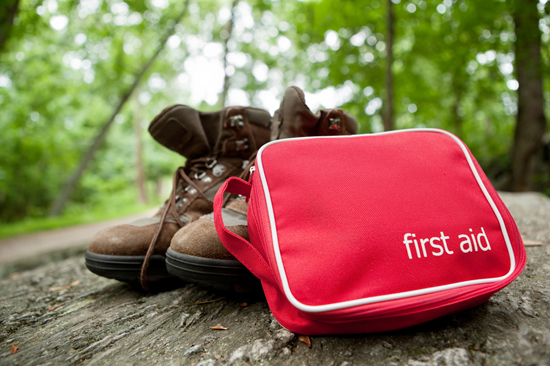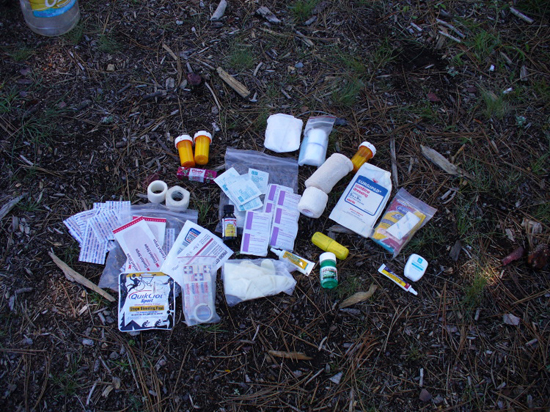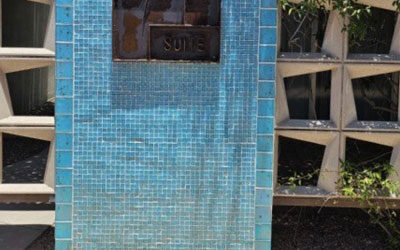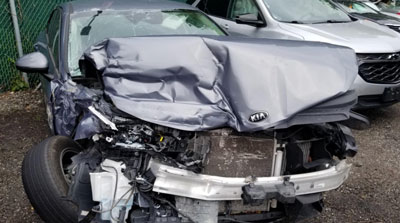
First aid kits are imperative while camping or homeless with MCS.
This is the final installment of a five part series on homelessness and survival while living with environmental illness. In this section I will address first aid as a homeless person with limited resources.
Disclaimer: The advice in this section does NOT constitute medical advice. Please contact 911 or local emergency personnel or your physician if you are having any medical emergency that requires professional medical intervention.
Since I am now uninsured, I informed my doctors that the only way I was going into a hospital was if:
A) I have something large sticking in me.
B) I have something that belongs internally coming out of me.
C) If I am bleeding profusely and cannot stop it (major artery).
D) If I have broken a major bone needing surgery and/or setting (toes and fingers don’t count).
E) Large open wounds (e.g., puncture wounds) that were beyond my ability to stitch shut (yes, I will stitch some of my wounds shut).
F) An infection that either will not go away or is getting worse.
G) I am bitten by an extremely venomous snake or insect (black widow spiders and rattlesnakes come to mind).
H) I am bitten by an animal (this includes being mauled by a bear or cougar).
I) Extremely sick to the point of utter incapacitation by pain, dementia (would I know to call for help?), or illness OR death was imminent if I don’t do something.
Everything else I will try to do myself. These are my general rules and I do not recommend others following these, especially if you have health insurance and do not have to endure prolonging going to the hospital.
Kidding aside, I know that prolonging necessary medical treatment will make whatever I have worse and harder to medically manage, possibly leading to further complications. The harsh reality for me is that I am uninsured and I have MCS. I have been in a situation where I told medical staff that I had MCS and was treated like a child. An x-ray tech that came to my room was swimming in cologne and I asked for him to open the window and he would not. He pushed me here and there to get the x-ray while I was trying not to cough. As he left he said, “There’s nothing wrong with you” even though I was spitting up phlegm right in front of him. I will NOT endure this again. This is why I came up with the above list and shared it with my doctors so if they received a call that I was hospitalized, it was serious.
I strongly recommend everyone to take first-aid courses if possible, learning CPR and the Heimlich maneuver. Homeless people need to delve a little further by reading about wilderness first-aid when help is hours, if not days, away. In many of the places I stay the best possible response time in usually 2 hours for them to get to me. The things that I have learned are stop gap measures to enable me to get out to where EMS can reach me faster or until they reach me.
I will cover what I carry in my first-aid kit and suggestions for reading material and resources to get educated on what to do in an emergency. Again, this is not a substitute for taking first-aid classes and/or doing your own research.

The author’s first aid kit.
My first aid kit, left to right:
• Various size latex free band-aids (cloth), a couple of the transparent bandages
• Quick Clot bandage for larger wounds which contains a compound to help blood coagulate faster
• Steri-strips for butterfly closures (using the strips to close larger wounds that do not require stitches)
• Variety of tapes, different kinds and sizes. Cloth adhesive, fabric adhesive, etc.
• Two small vials of baking soda (for upset stomachs or heartburn or insect bites)
• Cough drops
• Tincture of iodine
• Alcohol and benzalkonium chloride (from Dr. Rea’s) wipes
• Latex and non-latex gloves
• Large feminine hygiene pad (for gynecological emergencies or great for large chest or abdominal wounds as an emergency field dressing – you should carry two)
• One roll of gauze and two rolls of adhesive wrap bandages (for sprains/strains)
• Snakebite kit
• Neosporin/bacitracin
• Excedrin and aspirin
• Cotton swabs in a vial for applying ointments and iodine
• Large 5×7 wound dressing
• Kit for foot injuries (blisters, corns, etc). Contains moleskin, band-aids and a needle to pop blisters.
• Dental floss and Ambesol for dental emergencies
Things I need to add yet (as finances allow) – scalpel, EMT scissors (for cutting through clothing if necessary) and syrup of ipecac (for inducing vomiting if poison is ingested), suture kit (a proper one), dental emergency kit (with material to replace a lost filling, temporarily).
Some of these things have expiration dates (like the Neosporin, Excedrine, etc.) and it is important to go through this bag at least once a year to ensure that everything is current.
Things I have in my car for quick first aid (not shown):
• Activated Charcoal (for stomach flu or accidental poisoning or uncontrollable diarrhea). Warning: Drink lots of water with this; be aware that it will turn your stool black.
• Vodka (in a witch hazel bottle so I don’t have issues with the police in terms of alcohol containers being in the car. I carry the bottle in the trunk.)
• A variety of band-aids and moleskin
• Cheese cloth
• Cut strips of cloth from an old shirt, preferably cotton, for making bandages and compresses
• Tweezers
• Needles (for digging out slivers or other small things in the skin)
• An antibiotic salve with all plant ingredients, Golden Salve by Equinox Botanicals
• Azulene oil (from the Yarrow plant), good for burns, wind chaffing
• Dercut homeopathic cream for abrasions, cuts, rashes
• Traumheel homeopathic salve for bruises and sprains
• Clay face mask cream (ready to use). Good for applying on bites, pimples, skin eruptions (easier than making a baking soda paste).
• 100% Tea Tree oil for antibacterial cleaning and dressing of more severe wounds or infected wounds and for tick bites
• 100% organic, extra virgin coconut oil (Barleans cooking oil). This is great for sunburns, dry skin and small abrasions, scrapes. Keeps skin supple and aids forming scabs on wounds. Also helps to minimize scarring (but not recommended in grizzly country, smells strongly of coconut and may attract bears and other animals).
(Note: I do not carry aloe any longer as there are no longer 100% aloe gels. They all contain preservatives of some kind and some need refrigeration.)
• Astragalus capsules for when I feel like I am getting sick. Some people carry Echinacea as well.
I recently received an email from my naturopath’s office regarding first aid kits and equipping them with less toxic homeopathic items. I am copying from her list and sharing this for those who struggle to find acceptable first aid alternatives.
Digestion:
• Charcoal caps or charcoal powder
• Ipecac syrup
Bites and Stings:
• Homeopathic Apis 30c (oral) – for stings with swellings (bee stings)
• Homeopathic Ledum 30c (oral) – For bites (mosquito or spider)
• All purpose herbal salve (either over the counter like Golden Salve or from your naturopath or homeopath)
Cuts, Abrasions and Burns:
• Calendula Succus Tincture – dilute with water and clean wound
• All purpose herbal salve (after wound is cleaned)
Larger wounds that need more attention:
• Homeopathic Cantharsis 30c (oral)
For Burns or Sunburns:
• Lavender Essential Oil – Apply 1-2 drops topically to burns
Bruises and Muscle Aches:
• Homeopathic Hypericum 30c (oral) – for shooting pains or nerve pain
• Homeopathic Arnica 30c (oral) – for bruises and muscle aches
Miscellaneous:
• Hand sanitizer called “Clean Well”
• Epipen (prescription needed) A personal note on Epipens. I used to carry two but they were ruined due to my inability to keep them from freezing or getting too hot or exposed to direct sunlight. These need to remain at a fairly constant temperature to keep the epinephrine from degrading and becoming useless. Keep this in mind if you are living outside 100% of the time with no way of keeping these safe.
• Euphrasia Eye drops by Weleda – cleansing eyes. Recommended as it comes in single doses/packets.
• Electrolyte replacement packets
I do not recommend getting the small first aid kits that you see in stores. These are virtually useless (except the container can be used for you to build your kit) as they only address small injuries and not potentially life threatening ones. Outdoor stores and backpacking stores (REI comes to mind) carry more advanced first aid kits, but they are expensive. I think it’s cheaper to make your own.
Here are some things I have improvised:
• Deodorant for skin protection against the wind on my face. I use Alba Botanical with baking soda and lichen. This does have a slight odor to it even though it is fragrance free (no added fragrances, but the essential oils are what gives it its odor). It is waxy, but goes on smooth. It does not protect against the sun. As always, do a small test patch to make sure you do not break out.
• Duct tape for slivers. This is okay, but not always effective for deep slivers.
• Oatmeal for poison ivy. What I did was break conventional wisdom and scraped the blisters with the dull edge of a knife (wiping the blade each time to prevent spreading). I then boiled down oatmeal so it was thick. I separated the water from the oatmeal and kept the oatmeal juice. I placed the warm oatmeal in a cheese cloth and applied it as a dressing, letting it set for 30 minutes. Afterwards I would use the water to dab on the blisters (sometimes using vodka to dry them out). I did the dressing twice a day (or more if the itching was really bad).
• Apple sauce for diarrhea and whole apples for constipation. The apple sauce is high in pectin and helps with diarrhea. The fiber from the raw apples help to facilitate digestion and bowel movements.
• Pitch from either the Douglas Fir or Sub-Alpine Fir for small cuts and abrasions. I have also used the pitch to make an improvised splint with strips of cloth and a large amount of pitch. The pitch hardened making support for the arch of my foot and the compounds in the pitch helped with the inflammation. I do not recommend the Yellow Pine, Lodge pole, Juniper or Ponderosa as the pitch does not seem to harden (make sure to have a tree or plant guide to tell the difference).
Again, this is not a substitute for learning first aid on your own; this provides suggestions for handling some emergencies.
Educational Resources:
Wilderness Medicine, 6th: Beyond First Aid by William W. Forgey M.D.
American Medical Association Handbook of First Aid and Emergency Care by the American Medical Association
Build the Perfect Bug Out Bag: Your 72-hour Disaster Survival Kit by Creek Stewart
read Part 1 | Part 2 | Part 3 | Part 4
photos: Camping First Aid Kit © Leslie Banks | Dreamstime.com, Authors’s First Aid Kit © Vanessa










0 Comments